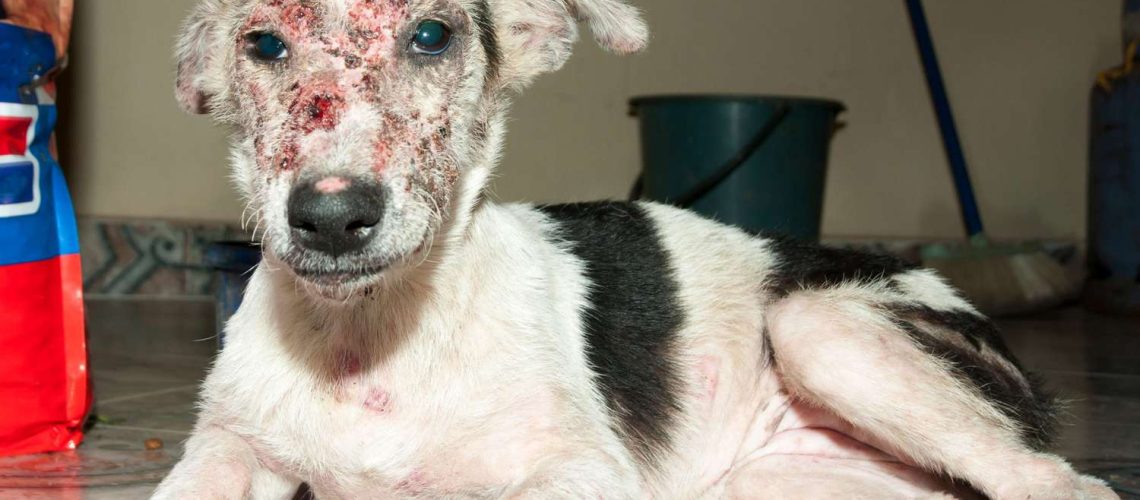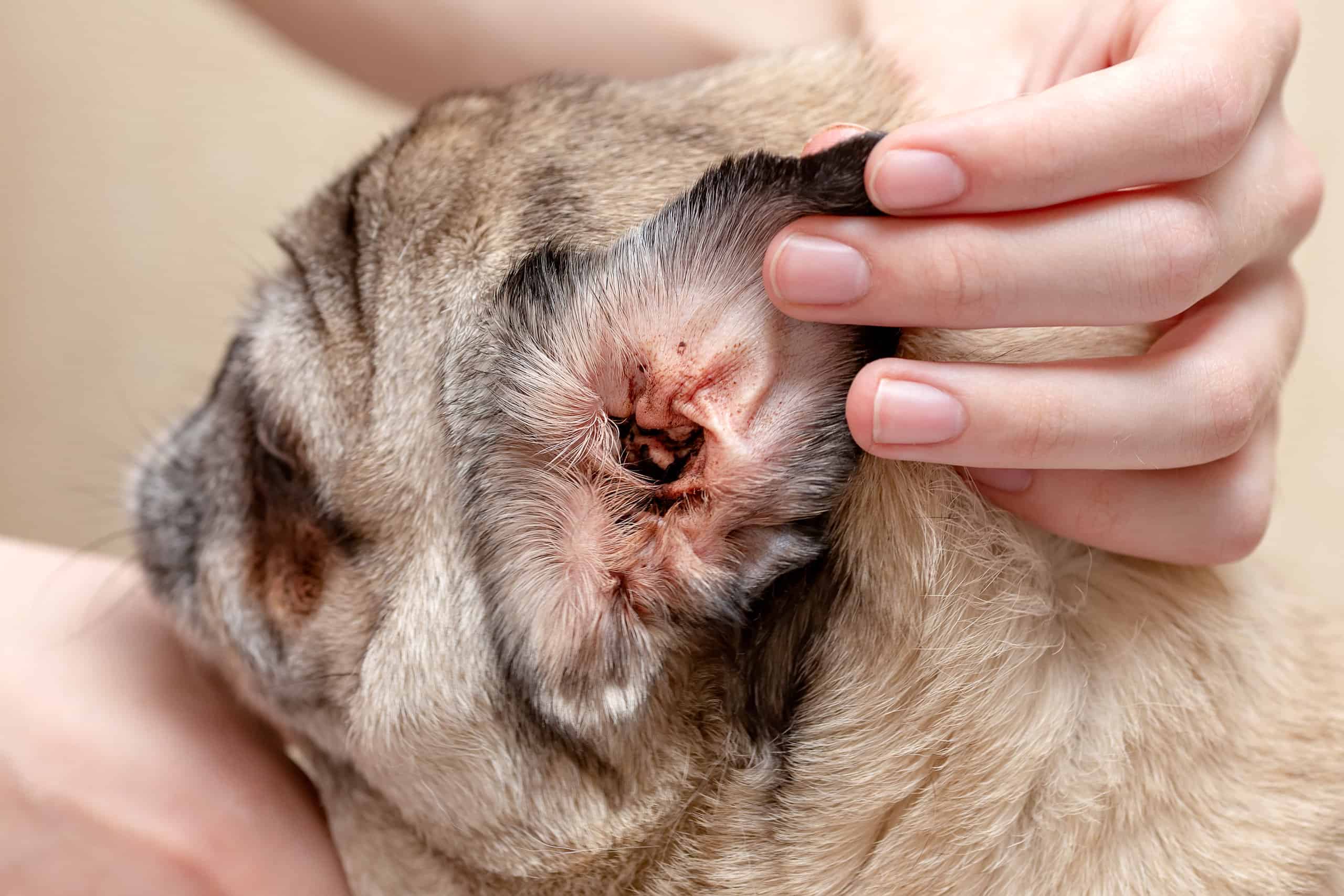Demodectic mange, a common skin condition in puppies, can cause discomfort and hair loss. Understanding its causes, symptoms, and treatment options is crucial for ensuring the well-being of these young dogs.
Key Takeaways:
- Demodectic mange is a common skin condition in puppies caused by mites.
- It is not contagious to other animals or humans.
- Puppies with weak immune systems are more susceptible to demodectic mange.
- Treatment options include medicated baths, topical ointments, and oral medications.
- Regular veterinary check-ups and proper nutrition can help prevent demodectic mange in puppies.
What is Demodectic Mange in Puppies?
Demodectic mange, also known as demodicosis or red mange, is a skin condition that commonly affects puppies. It is caused by tiny mites called Demodex canis that naturally live on the skin of dogs. These mites are usually harmless and do not cause any problems. However, in some cases, when a puppy's immune system is weak or underdeveloped, these mites can multiply rapidly and cause an overgrowth.
When there is an overgrowth of Demodex mites on a puppy's skin, it leads to symptoms such as hair loss, redness, itchiness, and sores. The mites burrow into the hair follicles and oil glands of the skin, causing inflammation and irritation. This condition primarily affects the face, neck, and forelimbs of puppies.
Why Do Puppies Get Demodectic Mange?
Puppies can get demodectic mange due to various reasons:
- A weak or underdeveloped immune system: Puppies have developing immune systems that may not be able to effectively control the population of Demodex mites.
- Inherited susceptibility: Some breeds are more prone to developing demodectic mange due to genetic factors.
- Stress or illness: Puppies who are stressed or have underlying health conditions may be more susceptible to developing demodectic mange.
The Role of Hormones
Hormones also play a role in demodectic mange. During puberty, hormonal changes can affect the regulation of Demodex mite populations. This is why demodicosis often appears around adolescence in certain breeds.
If you suspect your puppy has demodectic mange, it is important to consult a veterinarian for proper diagnosis and treatment. Early detection and intervention can help manage the condition effectively and prevent complications.
How Do Puppies Get Demodectic Mange?
Transmission
Demodectic mange in puppies is caused by the Demodex mite, which is naturally present on the skin of dogs. However, it only becomes a problem when there is an overgrowth of these mites. Puppies usually acquire demodectic mange from their mother during the first few days of life through direct contact. The mites are transferred from the mother's skin to the puppy's skin, where they start multiplying and causing skin problems.
Weakened Immune System
Puppies with weakened immune systems are more susceptible to developing demodectic mange. This can be due to genetic factors, poor nutrition, stress, or other underlying health conditions. When a puppy's immune system is not functioning properly, it cannot effectively control the population of Demodex mites on its skin, leading to an infestation and the development of mange.
Common Symptoms of Demodectic Mange in Puppies
Demodectic mange in puppies can manifest in various ways, and the severity of symptoms may vary depending on the individual puppy. Some common symptoms include:
Localized Hair Loss
One of the early signs of demodectic mange is localized hair loss. This typically starts as small patches with thinning or missing fur. These patches may appear red or inflamed and can be itchy for the puppy.
Scaly Skin
Puppies with demodectic mange often develop scaly or crusty skin in areas where hair loss occurs. The affected skin may appear dry and flaky, resembling dandruff.
Bacterial Infections
Due to compromised skin integrity caused by demodectic mange, puppies are more prone to secondary bacterial infections. These infections can lead to additional symptoms such as increased redness, swelling, and pus-filled lesions.
Can Demodectic Mange Spread to Humans or Other Pets?
Demodectic mange is not considered contagious to humans or other pets. The Demodex mite species that affects dogs is specific to canines and does not infest humans or other animals. However, it is important to note that some individuals may have a hypersensitivity reaction to the mites, which can cause skin irritation if they come into contact with an infested puppy.
Diagnosing Demodectic Mange in Puppies
Skin Scraping
To diagnose demodectic mange in puppies, a veterinarian will typically perform a skin scraping. This involves gently scraping the surface of the puppy's skin using a sterile blade or scalpel. The collected sample is then examined under a microscope to check for the presence of Demodex mites.
Physical Examination
In addition to skin scraping, the vet will conduct a thorough physical examination of the puppy. They will look for characteristic signs of demodectic mange such as hair loss, scaly skin, and any secondary bacterial infections.
Breeds Prone to Developing Demodectic Mange
While any breed of puppy can develop demodectic mange, certain breeds are more predisposed due to genetic factors. Some breeds that are commonly associated with an increased risk of developing demodectic mange include:
- Boxers
- Bulldogs
- Dalmatians
- Shar-Peis
- Staffordshire Bull Terriers
It is important for owners of these breeds to be vigilant about monitoring their puppies' skin health and seeking prompt veterinary care if any signs of demodectic mange are observed.
Treatment Options for Demodectic Mange in Puppies
Medicated Shampoos
Mild cases of demodectic mange in puppies can often be treated with medicated shampoos that contain ingredients like benzoyl peroxide or sulfur. These shampoos help to reduce the number of mites on the skin and alleviate symptoms such as itching and inflammation.
Topical Medications
For more severe cases, topical medications may be prescribed by a veterinarian. These medications usually contain antiparasitic agents such as selamectin or amitraz, which are applied directly to the affected areas of the puppy's skin. They work by killing the mites and preventing their reproduction.
Oral Medications
In some instances, oral medications may be necessary to treat demodectic mange in puppies. These medications, such as ivermectin or milbemycin, are typically given daily for several weeks or months to effectively control the mite population.
Preventing Demodectic Mange in Puppies
While it may not always be possible to prevent demodectic mange in puppies, there are steps that can be taken to reduce the risk:
- Ensuring puppies receive proper nutrition and a balanced diet to support a healthy immune system.
- Avoiding breeding dogs with a history of demodectic mange, as it can have a genetic component.
- Minimizing stressors that can weaken a puppy's immune system.
- Regularly grooming and inspecting a puppy's skin for any signs of hair loss or skin abnormalities.
By implementing these preventive measures, owners can help reduce the likelihood of their puppies developing demodectic mange.
Puppy's Recovery and Leading a Healthy Life with Demodectic Mange
With proper treatment and management, puppies with demodectic mange can recover and lead a healthy life. It is important to follow the veterinarian's instructions regarding medication administration, bathing routines, and any necessary follow-up appointments.
Regular check-ups with the vet will allow for monitoring of the puppy's progress and adjustment of treatment if needed. It is also crucial to maintain good overall health for the puppy, including providing a nutritious diet, regular exercise, and minimizing stress.
Owners should be aware that demodectic mange can sometimes recur or become chronic in certain cases. Therefore, ongoing vigilance and proactive management are essential to ensure the puppy's long-term well-being.
| In Conclusion | |
| Demodectic mange in puppies is a common skin condition caused by mites. | It can be effectively treated with proper care and medication. |
| Early detection and prompt treatment are crucial for a successful recovery. | Regular veterinary check-ups and maintaining good hygiene can help prevent future infestations. |
| Remember, with the right care, your puppy can overcome demodectic mange and enjoy a happy, healthy life! | |

















